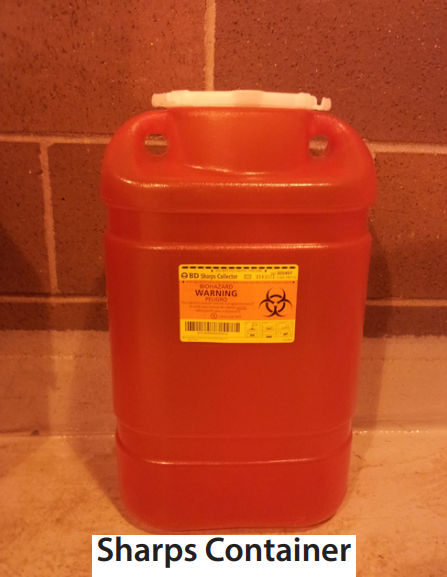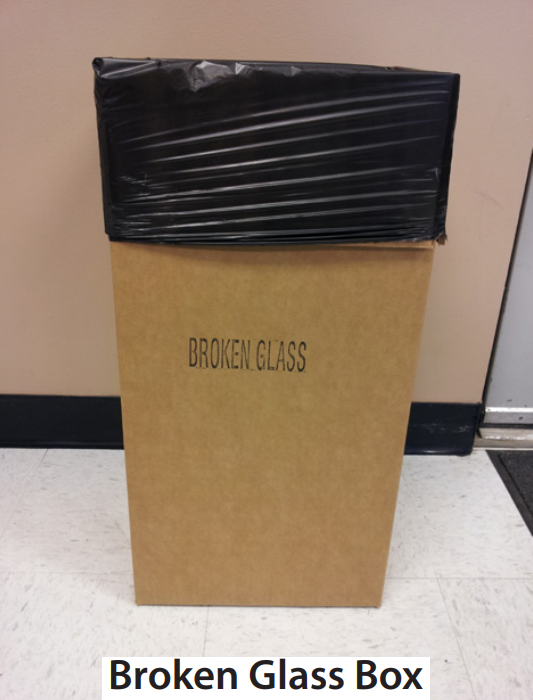FACT SHEET
Management of Biosafety Level-1 (BSL-1) Recombinant or Synthetic Nucleic Acid Waste
Most BSL-1 recombinant or synthetic nucleic acid molecules must be disinfected prior to disposal. Waste from SOME Exempt Experiments (described below) do not require disinfection or treatment prior to disposal.
Examples of BSL-1 recombinant or synthetic nucleic acid waste that must be decontaminated before disposal
BSL-1 recombinant or synthetic nucleic acid waste must either be (1) disinfected by the laboratory (autoclaving or approved chemical disinfection) and then disposed of in the trash or down the drain; OR (2) picked up by the University of Utah Environmental Health and Safety (EHS) team for disinfection and disposal at an off-site disposal facility.
Examples of BSL-1 wastes are:
- E-coli K-12, E-coli DH5α, including strains harboring recombinant plasmids
- Yeast (Sacchromyces Cerevisciae) harboring recombinant plasmids
- Transgenic Drosophila (insects and cell cultures)
- Transgenic C. elegans
- Transgenic Zebrafish
The Environmental Health and Safety (EHS) Lab Management System (LMS) allows research investigators to request hazardous material pickups by EHS staff and request empty containers. Please visit the LMS website for information.
Waste containers obtained from EHS are solid sided, leak proof, lined with red biohazard bags, and labeled with a biohazard symbol. Keep the container lid closed unless someone is working nearby and regularly adding waste to the container.
When the red bag is ¾ full, loosely tie or tape the bag closed. Secure the lid on the waste container and move it to a convenient storage location or transport it to a biohazardous waste storage room, if available. Biohazardous waste must be moved or transported inside a rigid, leak- resistant, labeled container with the lid closed. Request a pickup from your lab using the LMS.
If you have an autoclave available for disinfection of biohazardous waste, place a red biohazard bag in a solid puncture resistant container. Place a Ziploc bag or balloon containing water in the bag when it is about half full to generate steam during autoclaving. When the red bag is full, tie or tape the bag closed. Secure the lid on the waste container and move it to the autoclave room.
The bag should be removed and placed in a solid autoclave resistant tray: the bag should NEVER be placed directly on the floor. After the cycle, the bag may be disposed of as regular trash: indicators that the contents have been autoclaved must be present.
Aspirated tissue culture media and other liquid waste generated from BSL-1 experiments must be disinfected and then disposed. Bleach is typically used to disinfect liquids, but other agents, such as Vesphene III, may be used if effective.
If you use bleach:
- Ensure the final concentration exceeds 0.5% sodium hypochlorite (no less than one part bleach to 9 parts liquid).
- Ensure the bleach is fresh: in tissue culture media traps change at least twice weekly.
- Ensure the media is exposed to disinfectant for at least 20 minutes prior to disposal.
- Dispose down the sink
If you use Vesphene III
- Ensure the final concentration exceeds 1% (no less than one part Vesphene to 99 parts liquid).
- In tissue culture media traps change at least every 3 months (indicate the date of the last change on the flask).
- Ensure the media is exposed to disinfectant for at least 20 minutes prior to disposal.
- Collect waste into containers marked “Unwanted Materials” and date when you start collecting. When full or 6 months after your start date (whichever happens first), arrange pickup by EHS through the LMS website. NO DRAIN DISPOSAL.
If the container will be unattended (outside of your immediate control) then label it with the date, time and the words “Biohazardous liquid” and keep it in a secondary container (for example, a plastic tub) while it is disinfecting.
If you use other agents to decontaminate liquid cultures follow the instructions on the packaging. Contact the Biosafety Officer (801-581-6590) for advice on appropriate disinfectants and procedures for disposal of treated waste.
A sharp is any device having corners, edges, or projections capable of cutting or piercing. Sharps include, but are not limited to, the following
- Needles
- Needles with syringes and attached tubing
- Blades (razors, scalpels and X-acto®)
- Pasteur pipettes
- Broken glass, glass slides, and cover slips
Use a Food and Drug Administration (FDA)-cleared sharps container if you generate sharps waste. A description of FDA-Cleared Sharps containers can be found here. FDA-cleared sharps disposal containers are made from rigid plastic, come marked with a line that indicates when the container should be considered full, which means it’s time to dispose of the container, and have the Universal Biohazard symbol.

Serological pipets (glass and plastic) and disposable pipet tips are considered puncture hazards and should be disposed of as sharps. BSL-1 contaminated pipets and tips should be discarded in approved sharps containers, as described above.
Due to the size of serological pipets, investigators disposing of large numbers of these can request 20 gallon hard-sided biohazard waste containers (pictured) from EHS through the LMS. These will be picked up by EHS staff as other biohazardous waste.

Some BSL1 materials are exempt from the regulations described above. Naked DNA or RNA (NOT packaged into delivery systems, such as viruses or liposomes), such as human genomic DNA, oligonucleotide solutions, or plasmid DNA, can be discarded in the regular trash without being autoclaved or decontaminated.
HOWEVER, serological pipets and disposable tips are still considered puncture hazards. If
these have been used to pipet exempt materials, or if they have been decontaminated
(such as with bleach or by autoclaving), they can be disposed of in a Broken Glass
box (rigid puncture resistant boxes lined with a plastic bag and labeled “Broken Glass”:
pictured below), which
can be obtained from your custodial staff or from EHS. Once they are 2/3 full they
should closed with tape and disposed as regular trash by your custodians.

